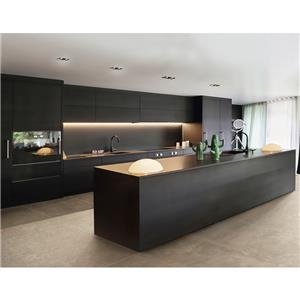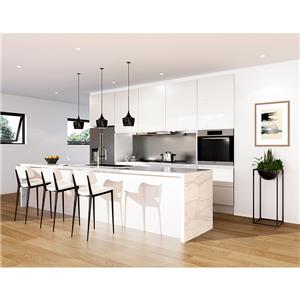Do Kitchen Cabinets Go on Top of the Flooring - Hanse
If you are planning to remodel your kitchen or install new cabinets, you may be wondering whether kitchen cabinets should go on top of the flooring or if they should be installed first. This is a common question that many homeowners ask, and the answer depends on various factors.
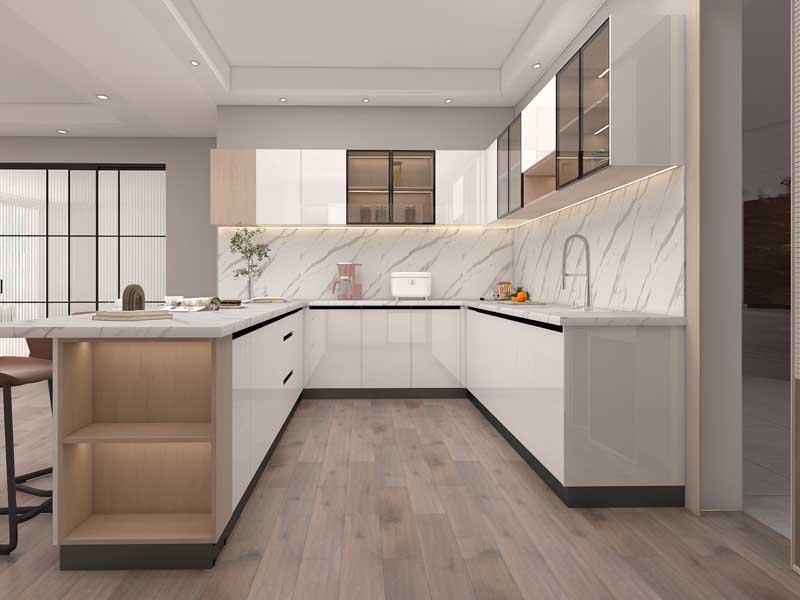
Hanse Cabinet Advise
The short answer is that kitchen cabinets should be installed before the flooring. Here are a few reasons why:
Cabinet Height: Kitchen cabinets are typically 34-36 inches tall, including the countertop. If you install the flooring first, the height of the cabinets will be reduced by the thickness of the flooring. This can create a gap between the countertop and the wall, making it difficult to install appliances like stoves and dishwashers. Installing the cabinets first ensures that the height is perfect and there are no gaps.
Leveling: When installing cabinets, it is essential to ensure they are level and secure. Installing the cabinets first allows you to level them on the subfloor or the bare concrete slab. If you install the flooring first, it can be challenging to level the cabinets on an uneven surface, leading to wobbly and unstable cabinets.
Seamless Look: Installing the cabinets first ensures that the flooring runs smoothly underneath the cabinets, giving your kitchen a seamless look. If you install the flooring first, you will need to cut it around the cabinets, which can create an uneven and unsightly appearance.
Cost: If you are on a tight budget, installing the cabinets first can save you money. Installing the flooring first means that you will need to purchase more flooring material to cover the area under the cabinets. Installing the cabinets first reduces the amount of flooring you need, making it a cost-effective option.
Access: If you ever need to replace or repair the cabinets or appliances in the future, it is much easier to do so when the cabinets are installed first. If the flooring is installed first, you will need to remove it to access the cabinets, which can be time-consuming and costly.
In conclusion, kitchen cabinets should be installed before the flooring. It ensures that the cabinets are level and secure, provides a seamless look, saves money, and allows for easy access to the cabinets and appliances. If you are planning a kitchen remodel, be sure to consult with a professional to ensure that the installation is done correctly and efficiently.
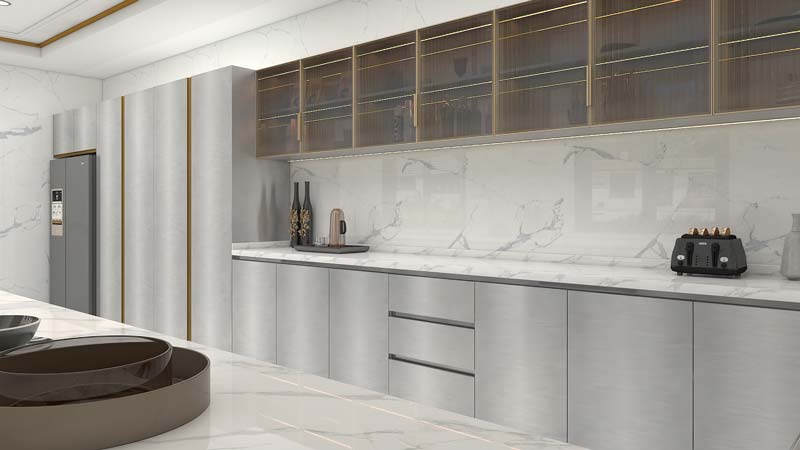
Of course, some people will have different choices. Here are the advantages and disadvantages of the two installation methods for your reference:
Installing Kitchen Cabinets on Top of the Floor
Advantage
Easy installation: Installing kitchen cabinets on the floor is a simple process. It requires minimal work and can be installed in a relatively short amount of time.
Easier floor replacement: If you decide to replace your kitchen floor in the future, it will be much easier to do so if your cabinets are installed on the floor. You don't need to remove the cabinets first, which saves time and money.
More Versatile: This method of installation allows for more flexibility in the type of flooring you can choose. You can choose any type of flooring you like without compromising the cabinet installation.
Better for Uneven Floors: If your kitchen floors are uneven or sloped, mounting cabinets to the floor will help level them. This will prevent your cabinets from bending or wobbling.
Shortcoming
Height Concerns: The most notable disadvantage of this method of installation is that it increases the height of the kitchen cabinets. This can be a problem if you have low ceilings or if you want to maintain a specific height for your countertops.
Difficulty moving cabinets: If you need to move cabinets in the future, doing so can be difficult if they are installed on the floor. You may need to remove the flooring around the cabinets, which can be time-consuming and expensive.
Less stable: Kitchen cabinets installed on the floor may not be as stable as those installed directly on the subfloor. Over time, this can cause problems with the cabinet moving or coming loose.
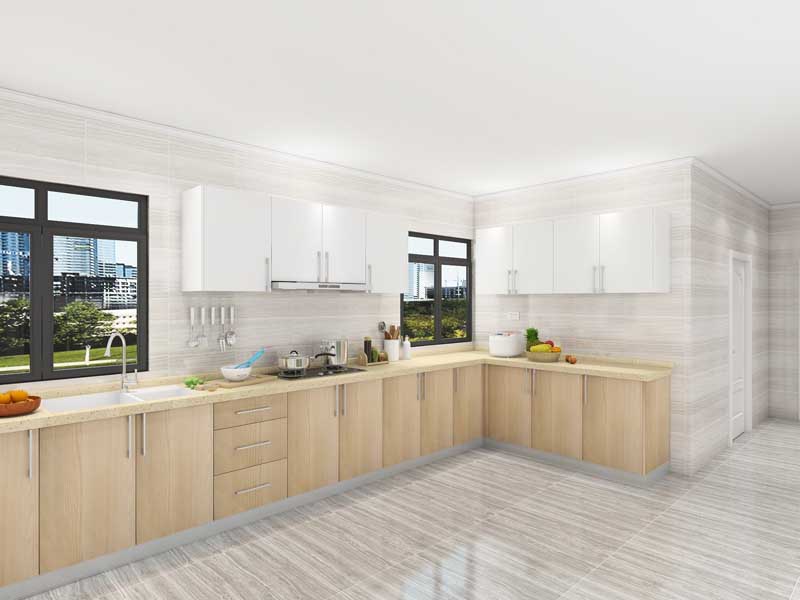
Installing Kitchen Cabinets Underneath Flooring
Advantage
More stable: Kitchen cabinets installed directly on the subfloor are generally more stable than those installed on the floor. This helps prevent problems with cabinets moving or coming loose over time.
Cleaner Appearance: This method of installation provides a cleaner appearance because the floor extends all the way to the cabinets with no visible gaps between the floor and the cabinets.
Shortcoming
Difficult to install: Installing kitchen cabinets under the floor is more complicated than on the floor. It takes more effort and time to complete.
Difficult to replace floors: If you need to replace your kitchen floor in the future, it will be more challenging to do so if your cabinets are installed under the floor. You need to remove the cabinet first, which is time-consuming and expensive.
FAQs
Can I paint the kitchen cabinets?
Yes, you can paint kitchen cabinets. It is a relatively simple and inexpensive way to give them a fresh new look. Make sure to thoroughly clean and sand the cabinets before painting, and use a high-quality primer and paint for the best results.
How to change the kitchen cabinet color?
To change the color of your kitchen cabinets, you'll need to start by sanding the existing finish off of the cabinets. Once you have a smooth, clean surface, you can apply a new coat of paint or stain. You can also use a combination of both for a unique look. Be sure to use a primer before painting or staining, and be sure to follow the instructions on the primer and paint or stain for the best results.



